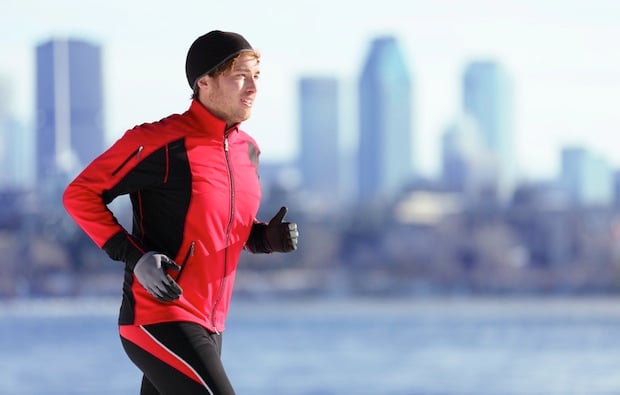With temperatures dipping below freezing, it finally feels like winter in Washington. But how cold does it have to be to keep you from exercising outdoors?
Pretty cold, according to the American College of Sports Medicine. In a statement published in the journal Medicine & Science in Sports & Exercise, the organization wrote, “Exercise can be performed safely in most cold-weather environments without incurring cold-weather injuries.” In fact, it’s still okay to exercise outdoors when temperatures drop to minus 18 degrees Farenheit; researchers just recommend that “heightened surveillance” be kept on exercisers.
Of course, warmer is better, with the ideal temperature for peak performance hovering between 36 and 52 degrees. And according to research, athletes tend to perform worse in too-cold weather since they have to expend more energy—10 to 40 percent—due to diminished blood pumping and thus less oxygen to the muscles.
So if exercising indoors isn’t an option for you, try to exercise in the late afternoon when body temperature reaches it peak. The American Council on Exercise says that exercising later in the day often produces better performance, since muscles are warmed up and more flexible than in the morning.
The following extra steps should be taken to prevent cold-weather injuries:
1) Wear weather-appropriate clothing.
Dress appropriately by wearing three layers: an inner layer of lightweight polyester or polypropylene, which will wick moisture away from the skin; a middle layer made of polyester fleece or wool for insulation; and an outer layer that will repel wind or rain that should be worn only during rest periods. Avoid cotton clothing at all costs, as the material doesn’t hold body heat as well as wool or polypropylene, according to the Department of Health and Human Services.
2) Know the signs of hypothermia and frostbite.
Symptoms of hypothermia and frostbite can vary, but early symptoms of hypothermia include feeling cold, shivering, and signs of apathy or withdrawal. Frostbite is most likely to occur in exposed skin, such as the nose, ears, cheeks, and wrists. The first sign is usually numbness.
3) Take extra caution if you suffer from asthma or heart disease.
Those who suffer from these conditions are at increased risk of injury when exercising in cold weather. They should be properly monitored during exercise; cardiac patients should be especially cautious if engaging in activities that involve the upper body, such as snow shoveling.
4) Acclimate.
In order for our bodies to get used to exercising outdoors during winter, research shows that short, intense exposure to cold for less than one hour a few times a week should do the trick.



















